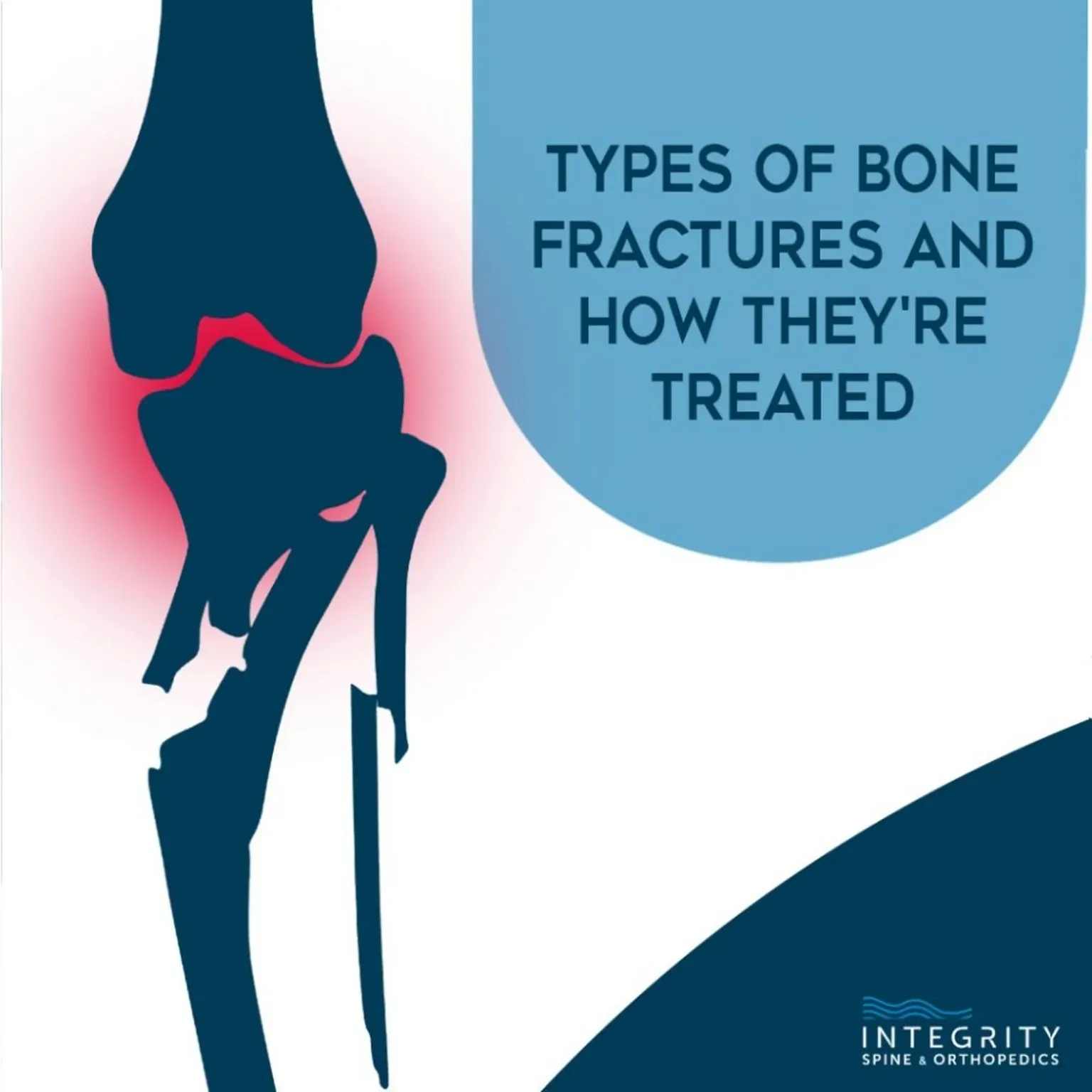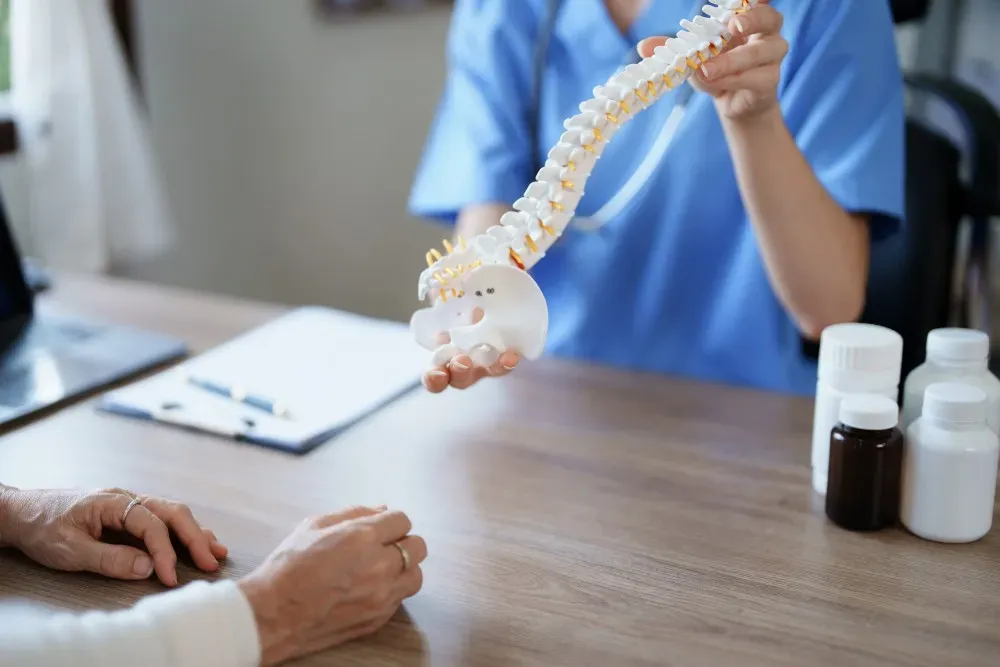Neurosurgery & Orthopedic Surgeons in Jacksonville

Types of Bone Fractures and How They’re Treated
What is a fracture? A fracture occurs when a bone is broken or cracked. While human bones can withstand an incredible amount of force, too much impact exerted on a bone leads to a break.
What is a fracture? A fracture occurs when a bone is broken or cracked. While human bones can withstand an incredible amount of force, too much impact exerted on a bone leads to a break. Falls, car accidents, and sports accidents are the most common causes of broken bones.
Age is a significant risk factor for developing fractures. Our bones become weaker and thinner with age, meaning that less force is needed to cause a break. Additionally, the risk of falling increases with age. On the other end of the age spectrum, children are also at higher risk for developing fractures because they lead more active lifestyles.
Fracturing a bone is very painful, and you’ll likely know right away that you have a serious injury. Intense pain, swelling and bruising commonly occur at the time of impact. If a bone is broken, you’ll have difficulty moving it or bearing weight on the injured area. You should seek medical help immediately for a fracture, especially if the broken bone breaks the skin.
10 TYPES OF BONE FRACTURES
Bones break in multiple ways. Closed fractures don’t break the skin, while open fractures (also called compound fractures), puncture the top layer of skin and expose bone and soft tissues. Compound fractures can be very dangerous without careful monitoring and treatment because an open wound increases the risk of infection.
Partial or incomplete fractures occur when the bone cracks but doesn’t break completely, while a complete fracture occurs when the bone breaks cleanly into two or more pieces. A displaced fracture occurs when the broken bone moves out of proper alignment.
Besides the broad categorizations listed above, your fracture may be diagnosed as one of the following fracture types:
- Avulsion. An avulsion fracture occurs when a connective tendon or ligament pulls a part of bone off, separating it from the rest of the bone.
- Comminuted. A comminuted fracture occurs when the bone shatters into three or more bone fragments.
- Compression. A compression fracture occurs when bone is crushed or flattened. They most commonly develop in the spine.
- Greenstick. A greenstick fracture occurs when the bone bends or bows, but doesn’t break completely. These types of fractures develop in children whose bones are not fully solid yet.
- Impacted. An impacted fracture occurs when a fragment of bone is driven into another piece of bone.
- Oblique. An oblique fracture occurs diagonally across the bone.
- Pathological. A pathological fracture occurs as a result of an underlying disease or medical condition that’s already weakened the bone.
- Spiral. A spiral fracture occurs when the break spirals or twists down the bone.
- Stress. A stress fracture occurs when a hairline crack forms in the bone due to repeated stress or pressure. These types of fractures are common among athletes.
- Transverse. A transverse fracture occurs straight across the bone.
DIAGNOSIS AND TREATMENT OPTIONS
Your doctor will perform a physical evaluation and order imaging studies (like an X-ray or MRI) to determine the type and severity of your fracture. Your treatment will be based on where the fracture is located and how severe the damage is.
The primary goal of treatment is to place the broken bone in optimal conditions for it to heal naturally. The bone must remain immobile throughout the healing process for it to grow together properly. Immobilization can be achieved through several methods:
- Splint, brace or cast. These assistive devices serve to stabilize and support a broken bone while it heals. They differ in the amount of support they provide, with a sling providing less support and a cast providing the most support. Your doctor will decide which option is best for you based on the severity of your injury.
- Traction. Traction is an immobilization technique that uses pulleys and weights to gently stretch the muscles and tendons around a broken bone. Traction aligns the bone ends to promote healing.
- Open reduction and internal fixation (ORIF). Severe fractures may require surgery. During an ORIF, your doctor will realign the broken bone and use rods, screws and plates to hold it in place while it heals.
Broken bones take an average of 6-8 weeks to heal. During that time, you’ll have to modify activities so that you don’t move the injured area. You can take pain medications for the first few days, and the pain will likely end long before the bone is completely healed. After you’ve recovered, your doctor may recommend a course of physical therapy to improve strength and flexibility.
FIND EXPERT FRACTURE CARE AND TREATMENT AT INTEGRITY SPINE AND ORTHOPEDICS
If you sustain a fracture of any type, seek help immediately at Integrity Spine and Orthopedics. Our Jacksonville, FL clinic provides skilled orthopedic care, pain management, sports medicine, and minimally invasive surgery services. Call us today or reach out online to make an appointment.




